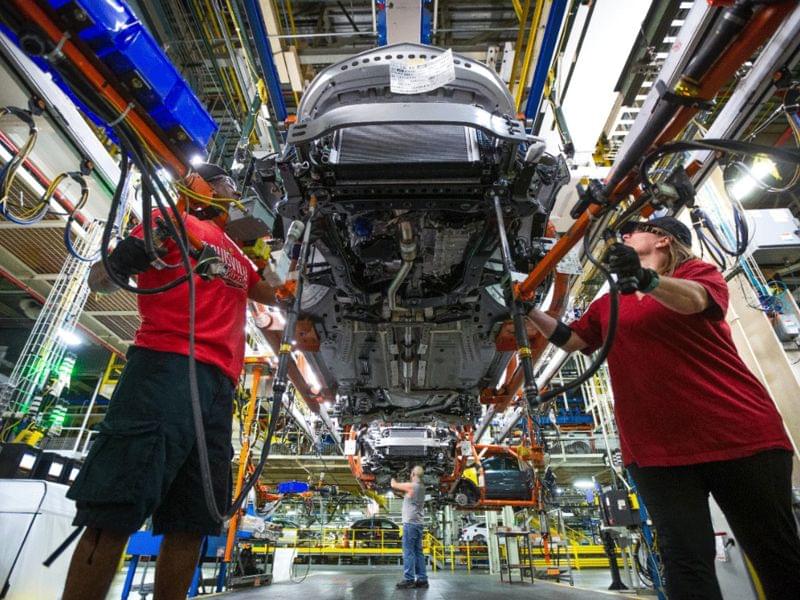“Where is everybody?”
The Fermi Paradox has perplexed scientists for years. We examine the possibility that we haven’t heard from any aliens is because no one is transmitting.
“Where is everybody?”
The Fermi Paradox has perplexed scientists for years. We examine the possibility that we haven’t heard from any aliens is because no one is transmitting.

NASA’s next asteroid-bound mission to explore the earliest days of our solar system is nearly ready to launch.
The Lucy spacecraft is targeting a launch window that opens on Saturday (Oct. 16). After blastoff, the spacecraft will make a 12-year journey to the outer solar system, where it will visit half a dozen ancient “Trojan” asteroids that orbit in the same path as the planet Jupiter.

Not all who wander are lost – but sometimes their cell phone reception is. That might change soon if a plan to project basic cell phone coverage to all parts of the globe comes to fruition. Lynk has already proven it can use a typical smartphone to bound a standard SMS text message off a low-earth-orbiting satellite, and they don’t plan to stop there.
Formerly known as Ubiquitilink, Lynk was founded a few years ago by Nanoracks founder Charles Miller and his partners but came out of “stealth mode” as a start-up in 2019. In 2020 they then used a satellite to send an SMS message from a typical smartphone, without requiring the fancy GPS locators and antennas needed by other, specially made satellite phones.
The company continued its success recently by demonstrating a “two-way” link this week using a newly launched satellite, its fifth, called “Shannon.” They’ve also proved it over multiple phones in numerous areas, including the UK, America, and the Bahamas.

Jupiter, Saturn, Uranus, or Neptune may have sent the Earth-sized planet barreling toward deep space.
Scientists believe that there could be a ninth planet in our solar system, lurking somewhere beyond Neptune—but don’t get too excited, because this isn’t about Pluto.
Rather, this is the story of a mysterious Earth-or Mars-sized planet that may have swirled beyond the asteroid belt, among the gas giants, before they ultimately swept this potential “Planet 9” toward the outer reaches of our solar system… or even into deep space. The theory makes sense on its face: Jupiter is kind of known as a bully, after all.

Professor Hasselmann developed a method for satellite ocean wave measurements.
This year’s Nobel Prize in Physics laureate Klaus Hasselmann helped to shape a ground-breaking Earth-observation mission that paved the way for the modern study of our planet’s environment.
The German oceanographer and climate modeler was awarded the coveted prize for his contribution to the physical modeling of Earth’s climate that has enabled scientists to quantify the climate’s natural variability and better predict climate change. Hasselman won half of the 2021 Nobel Prize for Physics last week, with the other half shared by scientists Syukuro Manabe and Giorgio Parisi for their own research on disorder and fluctuations in physical systems.

DETROIT — General Motors on Friday said it expects to reopen the remaining three North American assembly plants that have been idled because of the global microchip shortage by Nov. 1.
GM also said it plans to resume building Chevrolet Malibu sedans for the first time in nearly nine months at a plant that has partially reopened in Kansas.
The automaker said its plant in Ramos Arizpe, Mexico, which has been shut since mid-August, would start building Chevy Blazers on Oct. 18 followed by Chevy Equinoxes as soon as Nov. 1.

The Pentagon’s first chief software officer said he resigned in protest at the slow pace of technological transformation in the US military, and because he could not stand to watch China overtake America.
In his first interview since leaving the post at the Department of Defense a week ago, Nicolas Chaillan told the Financial Times that the failure of the US to respond to Chinese cyber and other threats was putting his children’s future at risk.
Full Story:
Please use the sharing tools found via the share button at the top or side of articles. Copying articles to share with others is a breach of FT.com.

Speaking of cars, consider the future of transportation and mobility, entailing the advent of self-driving cars.
It would seem that self-driving cars will be a welcomed boon to humanity. Predictions are that the regrettable 40,000 annual fatalities due to car crashes in the United States alone will be reduced enormously, and likewise, the estimated 2.3 million car crash injuries will nearly disappear.
What’s not to like about the emergence of self-driving cars?
That brings up this intriguing question: Could the advent of AI-based true self-driving cars somehow get intermingled into the act of bothering a neighbor?
This seems like a rather curious question and defies the aura of goodness that surrounds the self-driving car realm.
Full Story:

With the jump, SpaceX is now the world’s second most valuable private company, trailing only TikTok parent Bytedance, which is worth $140 billion, according to CB Insights.
Full Story:
Intech Company is the ultimate source of the latest AI news. It checks trusted websites and collects bests pieces of AI information.